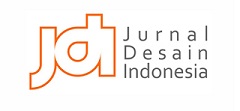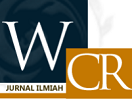MAKNA EKSISTENSI LEUIT, SAUNG LISUNG, DAN GOAH DI SUNDA KASEPUHAN CIPTAGELAR DALAM MENJAGA KETAHANAN PANGAN
Abstract
The traditional Sunda Kasepuhan Ciptagelar community is considered to have achieved food independence because each citizen has sufficient food supplies for the next few years. This community has rules related to food processing, such as storing rice in leuit (barn), pounding rice in saung lisung, and cooking rice in goah (cooking area) according to the teachings of their ancestors (tatali paranti karuhun) and the rules that bind them (tilu sapamilu). The purpose of this study was to see the relationship between the use of leuit, saung lisung, and goah by the community with their success in managing food. So this study is an ethnographic study using qualitative methods with data obtained from field observations, interviews with indigenous experts and local residents, and literature data. The data were analyzed using the theory of the meaning of the environment and architecture of Amos Rapoport, where understanding the meaning of the environment is important so that the physical environment such as buildings can be identified functionally, the value and meaning of their existence. This theory is supported by Edward Relph's theory of space and distance, which states that space has a unique quality where space is able to "command", focus human intentions, experiences, and actions spatially. This study also uses the elements of tatali paranti karuhun and tilu sapamilu to understand the meaning of existence from the perspective of the Sundanese Kasepuhan Ciptagelar community. The results of the study found that each process of rice processing in leuit, saung lisung, and goah became a complete unit and had to be carried out according to ancestral teachings which could not be replaced by modern technology. So that the three buildings are integrated, where the rules for storing rice, calculating when and how much rice is pounded, and the amount of cooking rice are fixed rules. The existence of permanent regulations on paranti karuhun and tilu sapamilu makes leuit, saung lisung, and goah a social institution for the people of Kasepuhan Ciptagelar in terms of food. This makes this community very careful in calculating daily food needs so that it is not excess or lacking and with it this community is able to manage food properly to achieve food sovereignty.
Keywords
Full Text:
PDF (Bahasa Indonesia)References
Ambayoen, M.A., Kusuma B.A., Pratiwi, R.E. (2018). Communication Strategy of Kasepuhan Sinar Resmi Community In Maintaining Local Varieties For Strengthening Leuit (Village Barns). Agricultural Socio-Economics Journal, 18 (1), 30-36.
DOI: 10.21776/ub.agrise.2018.018.1.5
Ariesa, Y. (2019). Faktor-Faktor Yang Mempengaruhi Ketahanan Pangan Dengan Menggunakan Analisis Faktor Konfirmatori. Jurnal Abdi Ilmu, 12 (1), 8-18.
Asep. (2000). “Kasatuan Adat Banten Kidul: Dinamika Masyarakat dan Budaya Sunda Kasepuhan di Kawasan Gunung Halimun Jawa Barat.” [Tesis] Bogor: Program Pascasarjana Institut Pertanian Bogor.
Firmansyah, E. K., Putrisari N.D., Rohmayani, Y. (2018). Sistem Religi dan Kepercayaan Masyarakat Kasepuhan-Kasepuhan Banten Kidul Cisolok Sukabumi. Jurnal Pengabdian Kepada Masyarakat, 2 (11).
Nuryanto. (2011). Fungsi dan Makna Pawon Pada Arsitektur Rumah Tradisional Masyarakat Sunda. Proseding The Local Tripod Akrab Lingkungan, Kearifan Lokal, Dan Kemandirian. Hal 164-170.
Rapoport, A. (1990). The Importance of Meaning. The Meaning of The Built Environment: A Non-verbal Commu-nication Approach, USA: The University of Arizona Press.
Rayadie, A. (2017). “Tradisi Ciptagelar di Sukabumi Mampu Pertahankan Kampung Adat” Dalam Pikiran Rakyat, 24 Maret 2017. Jawa Barat.
Sabarguna, B. S. (2005). Analisis Data Pada Penelitian Kualitatif. Jakarta: Penerbit Universitas Indonesia.
Seamon, D., dan Sowers, J. (2008) : Place and placelessness (1976): Edward Relph. Key Texts In Human Geography, 43-52.
Sumardjo, J. (2015). Sunda Pola Rasionalitas Budaya. Bandung: Penerbit Kelir.
Suryana, A. (2008). Menelisik Ketahanan Pangan, Kebijakan Pangan, Dan Swasembada Beras. Jurnal Pengembangan Inovasi Pertanian, 1 (1), 1-16.
Yuniati, S., Indriastuti, S., Purwanto, A. (2014). Model Pengembangan Peran Lembaga Sosial Dalam Peningkatan Produktivitas Masyarakat Suku Using Berbasis Kearifan Lokal. Penelitian Hibah Bersaing.
DOI: http://dx.doi.org/10.22441/narada.2021.v8.i1.006
Refbacks
- There are currently no refbacks.
Fakultas Desain dan Seni Kreatif
Universitas Mercu Buana
Gedung E Lantai 4
Jl. Raya Meruya Selatan no.1, Kembangan, Jakarta 11650
Tlp./Fax: +62215871335
Journal International Standard Serial Number (ISSN) Registration:
The Journal is indexed by:
Tools for Citations & Plagiarism Detection:

Ciptaan disebarluaskan di bawah Lisensi Creative Commons Atribusi-NonKomersial 4.0 Internasional
 NARADA: Jurnal Desain dan Seni
NARADA: Jurnal Desain dan Seni

























